Faced with two major changes, parallel comparison of the old and new administrative units is necessary to clearly distinguish the impact of the exam and the merger, thereby correctly identifying the current situation, as a basis for sustainable improvement of education quality.
First of all, keeping the unit of analysis unchanged helps maintain the continuity of the data series. For many years, high school graduation exam results have been compared according to 63 provinces and cities. If changed immediately after the merger, the data will be discontinuous, making it difficult to compare and evaluate trends. To accurately analyze the impact of the 2025 reform exam, it is necessary to compare it with the 2024 data on the same reference system.
Second, the merger does not immediately eliminate the disparity in educational conditions between regions. Places with good academic traditions or difficulties in facilities and staff still exist. If analyzed by new provinces, the characteristics are easily mixed, leading to inaccuracies in policy making. Comparing with old provinces will help identify the correct situation of each region. Third, in the stage of merging the management apparatus, detailed data by region is an important basis for effective resource allocation, supporting weak areas and balanced development.
Source: Data published by the Ministry of Education and Training and author's calculations.
Average scores drop and rankings change
According to the Ministry of Education and Training, the average score of the 2025 High School Graduation Exam will be 6.172, down 0.578 points compared to 2024 (6.750). All 63 provinces and cities (old) have decreased in score, in which many localities have decreased sharply such as Ninh Binh (0.983 points), Vinh Long (0.947), Son La (0.917), Bac Ninh (0.901), Binh Duong (0.840), An Giang (0.808), Nam Dinh (0.807). These are all localities that have had high achievements, but may face difficulties in synchronously implementing the 2018 General Education Program. On the contrary, some provinces have only decreased slightly such as Quang Tri (0.175), Quang Nam (0.364), Nghe An (0.370), Hanoi (0.375), showing better adaptation to innovation.
The decrease in average scores does not mean that the quality of education has declined. The main reason is that the 2025 exam was designed to assess real abilities, increase differentiation, and limit the "rain of high scores" as before. Math had the lowest average score (4.78), reducing the overall score nationwide. However, there were still 513 exams with a score of 10, showing that the exam was both well-classified and created conditions for excellent students to demonstrate their abilities.
Prof. Dr. Pham Hong Quang - Chairman of the Council of Professors of Educational Sciences, assessed that this year's exam clearly reflects the new educational philosophy: Focusing on fundamental knowledge, helping students develop a flexible, exploratory mindset and the ability to understand the world. These are core competencies in modern education.
Source: Data published by the Ministry of Education and Training and author's calculations.
This year's average ranking of localities recorded many fluctuations. Vinh Phuc maintained its top position. Some provinces increased their rankings significantly, such as Quang Tri (34 places), Quang Nam (24), Hau Giang (17), Hanoi (15), Ca Mau (14), Thanh Hoa, Nghe An, Thua Thien Hue (10), Quang Ninh (8), Hung Yen and Khanh Hoa (7). On the contrary, many localities dropped sharply, such as Vinh Long (29 places), Hoa Binh (19), Lam Dong (12), Kon Tum (11), Son La and Yen Bai (10).
Experts say that this change reflects many factors. First, foreign languages becoming an elective subject helps students in disadvantaged areas choose subjects with higher scores. Second, the exam questions are oriented towards application, thinking and problem solving, making it difficult for places that teach by memorization. Third, the review strategy and orientation for choosing exam combinations also have a big impact: Places that review according to ability and choose appropriate subjects will have better results.
In addition, facilities, teacher quality and career orientation also make a difference. Localities such as Quang Tri, Quang Nam, Hanoi, Nghe An, Thanh Hoa… have shown effective adaptation to the new program thanks to appropriate review organization and promoting students’ self-study ability.
Source: Data published by the Ministry of Education and Training and author's calculations.
20 top localities, 23 middle localities and 20 bottom localities
The 2025 high school graduation exam marks a shift from assessing knowledge to assessing students' abilities. The exam has three main objectives: to consider high school graduation; to provide reliable data for higher education institutions, vocational training institutions to recruit students and to serve as one of the bases for assessing teaching quality. Thus, the exam results are not the only criteria reflecting the quality of education, but need to be combined with other factors such as the teaching staff, teaching conditions, learning environment, etc.
Based on the average test scores, we ranked the localities from high to low and temporarily divided them into 3 groups: the top 20 localities, the middle 23 localities and the bottom 20 localities. These are indicators that help localities determine their position and find solutions to improve quality.
Source: Data published by the Ministry of Education and Training and author's calculations.
In the top 20 localities, it is worth noting the appearance of new localities such as Nghe An, Hai Duong and Hanoi (in the top 10). Vinh Phuc continues to maintain its impressive performance with 6 consecutive years of ranking increase, from 9th place (in 2020) to 1st place in the last three years. Nghe An, a province with 11 mountainous districts, rose strongly from 38th place (in 2020) to 2nd place (in 2025). Hai Duong progressed steadily, from 21st place to 8th place. Hanoi jumped from 22nd place in 2024 to 7th place in 2025, thanks to 43% of students not taking foreign language exams and choosing the right subjects for university admission.
Thus, the 2025 High School Graduation Exam not only creates conditions for both disadvantaged and advantaged localities to have the opportunity to improve their position, if they know how to effectively respond to the 2018 General Education Program and innovate testing according to capacity assessment, linked to reality, not closely following textbooks.
In the group of 23 middle-ranking localities, there are some localities with outstanding progress in rankings, such as Quang Tri, Quang Nam, Quang Ninh...
Among the bottom 20 localities, most are in the Northern mountainous region, the Central Highlands and the Mekong Delta. However, there are some favorable localities but their rankings have dropped sharply, such as Da Nang from 45th in 2024 to 54th in 2025, Vinh Long from 16th to 45th and Dong Nai from 41st to 49th.
Candidates taking the 2025 High School Graduation Exam in Can Tho City. Photo: QN
Comparison of 34 new localities
Comparing exam results by new provinces and cities is an urgent requirement when new administrative units start operating from July 1, 2025. The Ministry of Education and Training has also announced the average scores by new localities. Based on this data, we have ranked 34 new provinces and cities by average score of the High School Graduation Exam. The results show that 17 localities have an average score above 6 and 17 localities below 6.
The leading group includes: Nghe An, Ha Tinh, Ninh Binh, Phu Tho, Hanoi, Hai Phong, Thanh Hoa, Ho Chi Minh City, Hue City and Bac Ninh. Meanwhile, the group of 10 localities at the bottom of the table includes: Quang Ngai, Lao Cai, Khanh Hoa, Tuyen Quang, Lang Son, Dien Bien, Dak Lak, Lai Chau, Cao Bang and Son La.
According to this comparison result, the North Central provinces have shown clear progress, affirming the effectiveness of the regional education strategy, as well as the consensus in innovation from the grassroots level. Meanwhile, the mountainous and remote localities continue to need stronger support in terms of teaching staff and equipment, especially reference materials other than textbooks, learning conditions and policies to encourage students to attend school regularly and study independently under the guidance of teachers.
However, the new provincial comparison should only be considered as an initial indicator for a long-term analysis. For at least the next 1-2 years, it is necessary to maintain two reference systems (old and new) in parallel to have enough comparative data, avoid information gaps in policy making, and help newly merged localities fully understand the quality situation between regions in the province.
Parents and candidates learn about university admission information in 2025.
Building a culture of quality
One of the important messages from the 2025 High School Graduation Exam is the need to change the mindset about assessment and use of assessment results. The Ministry of Education and Training not only announces the score distribution of each subject with parameters such as average score, median score, score 0, score 10, etc., but also announces the average score of each subject by locality (old and new). Recently, the addition of percentile and the difference between exam scores and school report scores clearly shows the trend of shifting from simple statistics to in-depth data analysis.
The ranking of average scores between provinces and cities is not for the purpose of competition or comparison of ranks, but is a tool to reflect the current situation of teaching and learning, support management and adjust appropriate educational policies.
This is an important step in building a quality culture in education, based on three factors: Understand correctly - do correctly - use correctly. Understand correctly is to realize that the goal of benchmarking is to improve, not to classify or create pressure. Do correctly is to organize exams and analyze data transparently and objectively. Use correctly is to turn data into a tool to support decision-making instead of just to praise or criticize.
To effectively implement a culture of quality, education managers at all levels need to improve their capacity to analyze data, understand assessment results and make decisions based on evidence. This content needs to be integrated into regular training and development programs at teacher training colleges.
Teachers - the force directly affected by the exam - also need to change the way they teach and evaluate in the classroom. Strengthening assessment of capacity, integrating practical situations, and diversifying testing methods are appropriate directions to help students adapt better to the exam and develop real capacity.
The 2025 high school graduation exam marks a shift from knowledge assessment to competency assessment, from single results to comparative data series, from performance competition to substantive improvement. In this context, the approach to exam results needs to be carried out seriously, objectively and in-depth.
Benchmarking is not just about comparing scores, but is a strategic tool to guide policies, allocate resources, organize teacher training, improve teaching methods and enhance teaching effectiveness. When administrators and teachers understand and apply benchmarking well, Vietnam's education will gradually form a culture of quality - honest, progressive and sustainable.
At the Department of Education and Training level, it is necessary to compare exam results between high schools and vocational training centers according to many criteria, thereby helping each unit identify strengths and weaknesses to adjust teaching and learning activities, train teachers, allocate resources and provide training in accordance with the requirements of the new program. At the school level, it is necessary to analyze the comparison results for each class and each professional group. From there, schools can organize professional activities on a data basis, build more specific, practical and feasible improvement plans.
Source: https://giaoducthoidai.vn/xay-dung-van-hoa-chat-luong-ben-vung-giua-cac-dia-phuong-post746502.html


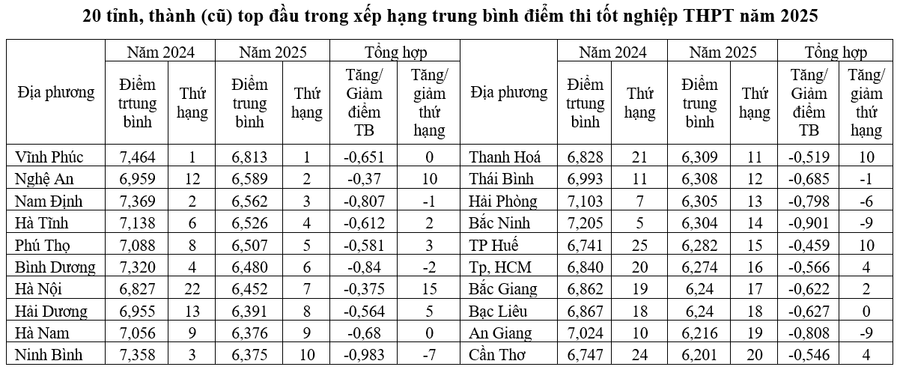
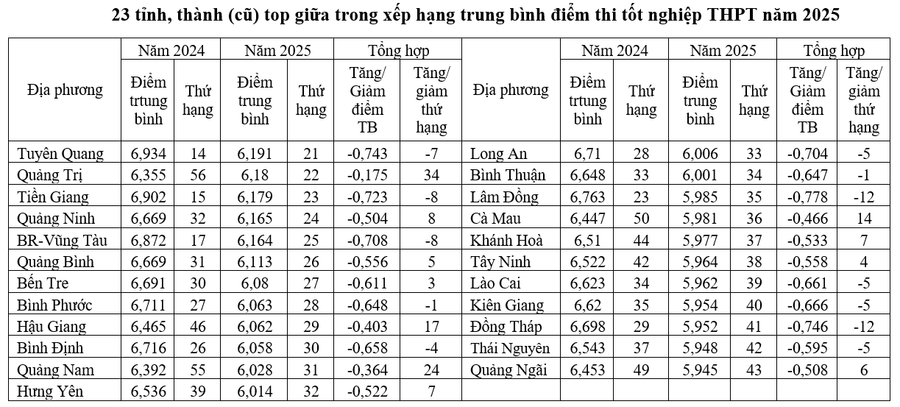
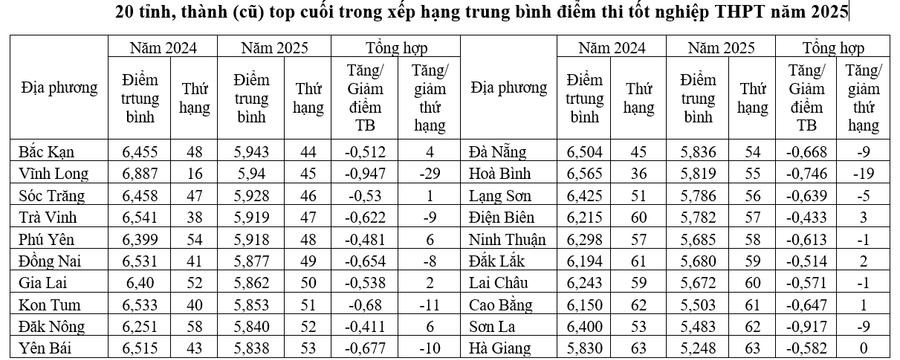
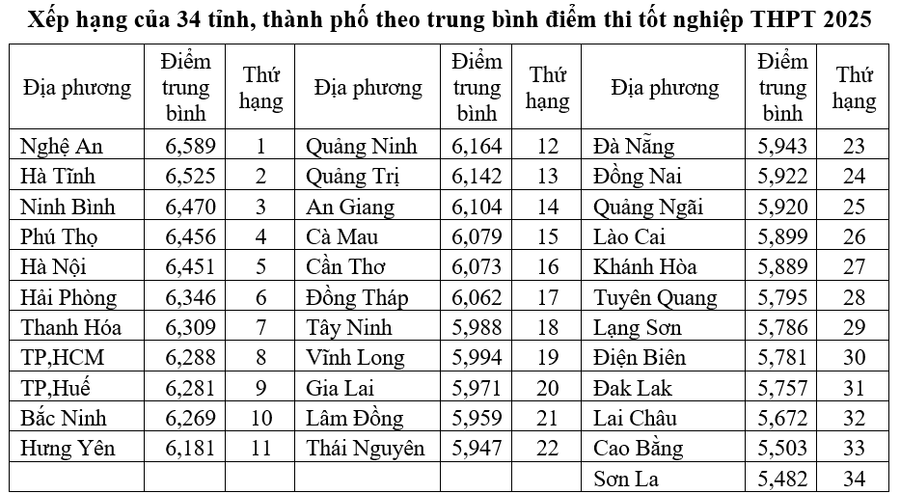



![[Photo] National Assembly Chairman Tran Thanh Man attends the 725th anniversary of the death of National Hero Tran Hung Dao](https://vphoto.vietnam.vn/thumb/1200x675/vietnam/resource/IMAGE/2025/10/12/1760285740475_ndo_br_bnd-8978-jpg.webp)

![[Photo] The 1st Government Party Congress held a preparatory session.](https://vphoto.vietnam.vn/thumb/1200x675/vietnam/resource/IMAGE/2025/10/12/1760257471531_dsc-4089-jpg.webp)

![[Photo] Delegation attending the Government Party Congress visited President Ho Chi Minh's Mausoleum](https://vphoto.vietnam.vn/thumb/1200x675/vietnam/resource/IMAGE/2025/10/12/1760240068221_dsc-3526-jpg.webp)


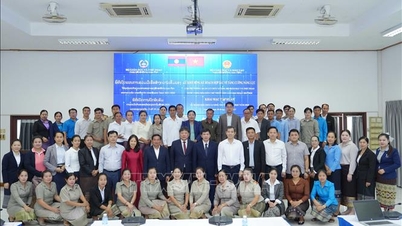


























































































Comment (0)